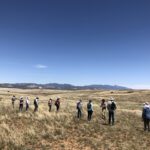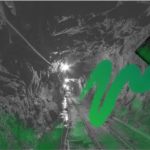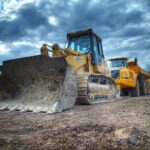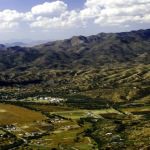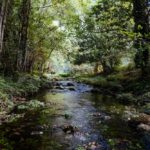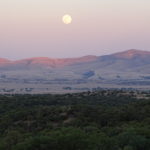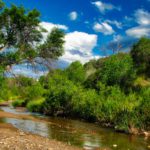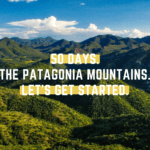
Mar 18, 2013 | Blog
By Dave Ellis
March 18, 2013
Two news items of interest appeared on March 4. First, the announcement by Arizona Mining Inc (Wildcat Silver), “Wildcat Silver to Acquire Riva Gold”. Second, a new report by business and financial advisers Grant Thornton UK LLP that has found that “Junior Mining Companies [like Arizona Mining Inc / Wildcat Silver] are facing significant shortfalls in working capital, posing a major concern to future growth prospects.” Read full article: Money worries weigh on juniors at PDAC
With a little internet research, it is clear that the two items are closely related. First, the Arizona Mining Inc / Wildcat Silver announcement has lots of qualifiers. So, the reality is that Arizona Mining Inc / WS and Riva Gold have simply entered into a Letter of Agreement providing for the acquisition by Arizona Mining Inc / Wildcat Silver of all Riva shares at 4.7 Riva for 1 Arizona Mining Inc / WS share. Riva has C$8.1 million cash and no mineral properties or activities. So it ain’t a done deal. “The proposed acquisition remains subject to, among other things, “– the negotiation and execution of a definitive agreement and applicable shareholder and regulatory approvals.”
Further, Riva agreed to provide a C$1 million loan to Arizona Mining Inc / WS at prime + 4% maturing on 12/31/2013. So WS gets some cash to drill some more holes on or around the Hermosa property. Between the lines, this means Arizona Mining Inc / Wildcat Silver has not been able to attract investor interest and, in desperation, has to accept limited, expensive financing for further exploratory drilling.
Second, Arizona Mining Inc / WS is not alone in failing to attract precious metals investors (suckers?) There are about 1600 Junior mining companies around the world. Neither Arizona Mining Inc / WS nor Riva are even listed as Juniors! The Grant Thornton report states that “Low cash balances, coupled with broader pressures around regulatory risks and rising operating costs, have put some Junior miners at a disadvantage in the capital markets and undoubtedly some of the poorly managed entities will go bust in the near future.” (We can only hope!)
The Back Story
It is helpful to step back and look at the money game in relationship to Gold & Silver. From Wikipedia, we learn that the silver market was 490 million oz (Moz) industrial, 167 Moz jewelry, and 101 Moz investment in 2010. Industrial use transitioned gradually from pre-digital camera photography to RoHS lead-free electronic solder and Photovoltaic solar panels over a 10 year period. The jewelry market is even more stable. Thus, the “real” uses of silver metal evolve slowly. In contrast, the market for silver & gold investment changes as fast as money moves around. Like — Fast! As with the housing market from 2002 to 2008, the precious metals market is currently experiencing an investment bubble.
The graphs clearly show both the Gold and Silver “bubbles” now in their terminal downward phase.

Silver Prices
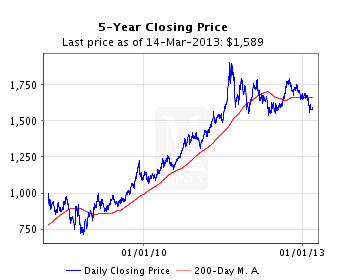
Gold Prices
Check out: http://www.google.com/finance?q=TSE%3AWS&ei=TF5DUZnFENL0rAGheQ
You will see that the price of WS stock mirrors http://www.monex.com/prods/silver_chart.html
PARA’s activism forces Arizona Mining Inc / WS to spend precious $ to move forward. So our efforts make a difference!
Notes: Silver ($45/$10 = 4.5) more volatile than Gold ($1800/$750 = 2.4). Both fast investment bubbles are due to “flight-to-safety in uncertain times”. Euro economies are stabilizing. Therefore, waning gold-silver investment goes down, so junior silver miners are struggling – duuuh!

Mar 12, 2013 | Blog
The Patagonia Area Resource Alliance is working to stop industrial mining in the Patagonia Mountains. We are very concerned about protecting and preserving the town’s water supply. Part of our mission also includes promoting the local tourism-based economy to our surrounding public lands and parks. The interesting thing that I’ve discovered while working for PARA is that our mission overlaps or complements the mission of many other organizations both local and national. Given that we’re on the Mexican border, I can say international organizations too! One of those organizations that complements our work is Wildlands Network.
John Davis with Wildlands Network is hiking the Western Wildway of the continent from Mexico to Alaska to promote awareness of the need for wildlife corridors. The Western Wildway is a 6,000-mile-long wildlife corridor that includes Mexico, the United States and Canada. According to their website, “protecting the Western Wildway represents North America’s best chance to ensure the survival of many threatened keystone species that require long-distance movement pathways, including grizzly bear, lynx, mountain lion, wolves, jaguars, and ocelots — all faced with growing pressure from development-based habitat fragmentation and climate disruption.” Learn more at www.trekwest.org
John Davis recently traveled through Patagonia, Arizona. PARA got the opportunity to show him the area in the Patagonia Mountains that is being threatened by Wildcat Silver’s proposed open pit mine. Accompanied by Matt Clark from the Southwest office of Defenders of Wildlife and Sergio Avila from Sky Island Alliance, we climbed American Peak in the Patagonia Mountains. We discussed how the wildlife corridor for jaguars, ocelots, bears and mountain lions through the Patagonia Mountains would essentially be blocked by the proposed Wildcat Silver mine. At the top of the peak, we could see into Mexico. The Patagonia Mountains are only one of two sky island mountain ranges that cross the border into Mexico. Sergio Avila quoted a study that showed that our bear population in the Patagonias is more closely related to bears in Mexico than they are in the nearby Santa Rita Mountains. The bird’s-eye view from the top further demonstrated the importance of the Patagonia Mountains as a wildlife corridor and the vast area of the mountains that would be impacted by Wildcat Silver’s proposed open pit mine, tailings piles, waste rock, tailings ponds and processing plants. Open pit mining operations and wildlife corridors cannot coexist.

Sergio Avila with John Davis on American Peak.
Photo ©Glen E Goodwin
We were thankful for the opportunity to bring our mission to stop mining in the Patagonia Mountains to the attention of an international organization with a complementary mission to keep North American wildlife corridors open. There are so many good reasons to keep open pit mining out of the Patagonia Mountains. Keeping vital wildlife corridors open is another one.
Wendy Russell

Mar 4, 2013 | Blog
The Super Citizen Advocacy Workshop hosted by the Patagonia Area Resource Alliance and Sky Island Alliance was a great success! We had over 30 folks come spend a beautiful Saturday afternoon with us in Cady Hall
The afternoon started out with Wendy Russell discussing the 5 mining projects with applications for mining exploration in the Patagonia Mountains. Three of the projects are situated at the head of the watershed for the town of Patagonia. Read more here: http://www.patagoniaalliance.org/patagonia-mining-proposals/

Melanie Emerson, Executive Director of Sky Island Alliance
Next up was Melanie Emerson, Executive Director with Sky Island Alliance with an exercise for the attendees of “Why are YOU here.” Answers ranged from protecting the mountains, saving the watershed, preserving dark skies, preserving peace and quiet to finding out how to help PARA stop the mines.
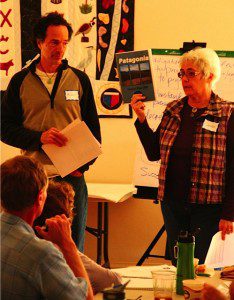
PARA Board Members Michael Stabile and Carolyn Shafer
Michael Stabile and Carolyn Shafer gave a presentation on current Patagonia directives that may be related to mining. Michael cited the new Vehicle Weight Ordinance and Watershed Policy which both help to protect the town from the extreme traffic and water usage that comes with mining. Carolyn Shafer discussed the Town Plan. The plan is very explicit when it comes to mining activity. It states as one of its goals, “Discourage mining and other activities that damage or detract from Patagonia’s environmental and scenic quality.” Read the Town Plan here.
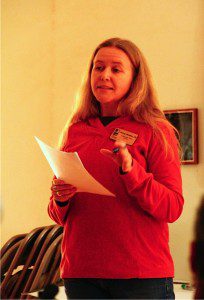
Jenny Neeley with SIA
Jenny Neeley Conservation Policy Director and Legal Counsel for Sky Island Alliance gave an overview of State and Federal Laws that affect mining on public lands. Some more familiar federal laws are the 1872 Mining Law, Clean Water Act and the Clean Air Act.
For an overview of the National Environmental Policy Act, we were very fortunate to have an expert, Dinah Bear. She had the unenviable task of condensing her 5 day course into a 30 minute discussion on NEPA. We’re all grateful for the copies of The Citizen’s Guide to NEPA that she brought. She also reminded us that you don’t have to be an expert to comment on these mining proposals.
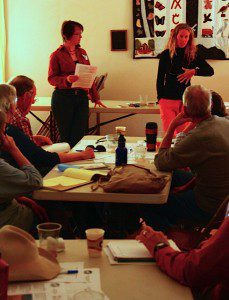
Wendy Russell & Kathi Noaker with PARA
Kathi Noaker and Wendy Russell helped to wrap up the afternoon with all of the different ways participants can spread the message about the threats to the town of Patagonia’s water, natural resources and community. We ended with many of the participants coming forward to sign on to help the PARA mission of education and outreach regarding the potential threats from mining in the Patagonia Mountains. Our super citizens of the town of Patagonia were amazing!
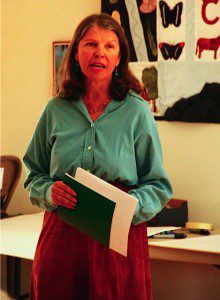
NEPA expert Dinah Bear
Thank you everyone! Special thanks to Dinah Bear, Jenny Neeley, Melanie Emerson and Patagonia® for helping to make it all possible!
Photos by Glen E Goodwin ©2013
For another view on the workshop, read “Save the Scenic Patagonia Mountains” blog by owner of the local B&B, A Room with a View. Thanks Sonia! Blog link: http://bit.ly/VKhUqu
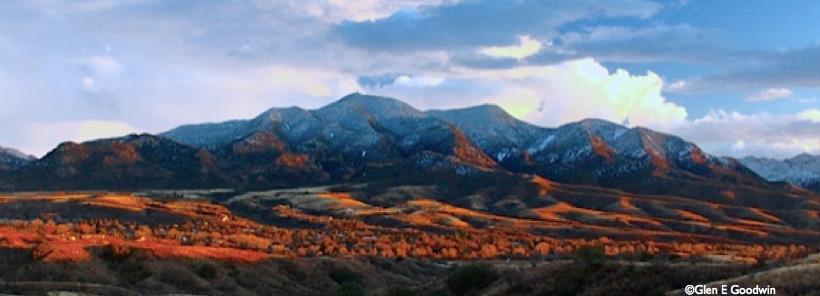
Feb 9, 2013 | Blog
The Patagonia community, PARA and SIA are gearing up to make a difference!
Visit the small town of Patagonia near Arizona’s southern border and the first thing you’ll notice is Red Mountain, the most prominent peak of the Patagonia Mountain range. Red Mountain and the rest of the mountain range contain an amazing array of native plant and wildlife species and even more extraordinary landscapes. There’s more biodiversity here than in Yellowstone National Park! The town of Patagonia, nestled at the base of the mountains, is the perfect launching off point for a wide variety of outdoor recreational activities including hiking the Arizona Trail, mountain biking, and world-class bird-watching. The community relies on this eco-tourism as well as the tourists that come to town just to enjoy our locally-owned restaurants, galleries and shops.

Unfortunately, our community and our mountains are immediately threatened by several hard rock mining proposals that would have severe and permanent impacts to this important Sky Island mountain range and the town of Patagonia. The mining claims encompass most of the Patagonia Mountains, including Red Mountain and the Arizona Trail. They even go right up to the southern edge of town. These mining proposals would destroy valuable wildlife habitat and would cut critical wildlife migration corridors. The mining activities would use vast quantities of water. We fear that they would lower the water table, reduce the water available to the town and even dry up private wells resulting in dire impacts to the vegetation, wildlife and townspeople.
In response to these threats, the Patagonia Area Resource Alliance and the community of Patagonia is working with Sky Island Alliance to advocate for the watersheds and natural and cultural resources of the Patagonia Mountains. Through a grant awarded from the Patagonia® Clothing Company, PARA and SIA are organizing training workshops to encourage Patagonia area residents to identify and collect information that highlights the extraordinary biological richness of our mountains. We will use that information to effectively advocate for the protection of this cherished mountain range.
SIA is lending us its expertise in many ways, including training Patagonia-area volunteers to play a key role in inventorying and documenting mammals, birds, bats, plants and more. SIA and PARA will also team with regional experts and other partners to conduct springs assessments, unobtrusive wildlife monitoring, and road inventories for a better understanding of our area’s resources. To utilize this information as effectively as possible, PARA will work closely with SIA throughout this project to launch a community-engaged and science-based advocacy campaign. This campaign will empower and build capacity within our community to promote the protection of the Patagonia area and halt current mining proposals.
These efforts will enable the community to effectively respond to the numerous exploratory drilling and mining proposals slated for this fragile area. It will also ensure that we are well-positioned to repel any future proposals by promoting the protection of this special place and the plants, animals and people who call Patagonia home.
The Patagonia community, PARA and SIA are gearing up to make a difference! With support from Patagonia® Inc, we will protect and preserve our exceptional Patagonia Mountains, the home to diverse wildlife and plant species, extraordinary landscapes and our community of amazing people.
Sep 7, 2012 | Blog
During the recent pubic meeting in Patagonia, AZ, Coronado National Forest Supervisor Jim Upchurch explained that it was the Forest Service’s responsibility to make mining projects economically feasible. His explanation came about when answering a question related to reclamation bonds. Mr. Upchurch explained that if the cost of reclaiming a mine would cause a project to become uneconomically feasible, then the FS would ask for less of a reclamation bond. For example, in this hypothetical situation, if total reclamation would cost 100 million dollars, but the mining company proved that would make the project uneconomical, and they only could afford 30 million for reclamation, the FS would reduce the amount of reclamation required to fit their budget.
When evaluating a project, the total cost from start to finish has to be taken into account. If not, and using the above example, the taxpayers are left holding the bill on 70 million dollars of a waste dump – a potential Superfund site – that will never get reclaimed. This is a total give-away of our public lands to mining corporations so they can make money shipping their product overseas, and we are left with thousands of acres of unusable lands.
Another definition of insanity – Give away our public lands to foreign mining companies for nothing, allow them to ship the resources overseas to China, and then leave a toxic site never to be used again that depletes and pollutes groundwater and destroys local, sustainable economies.
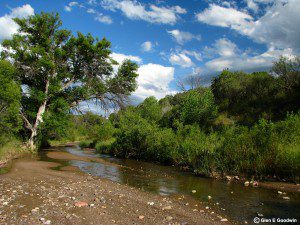
Jul 30, 2012 | Blog
Protecting Our Water Resources; Is Drought the New Normal?
 With the Summer Rain season in full swing, it’s easy to forget that we live in the desert. It’s also easy to forget that we are in a long-term drought. There have been two recent stories in the news about our strained water resources. Both stories discuss water flow in nearby Cienega Creek. KVOA offers NASA images capture Tucson – then and now. The Arizona Daily Star has an article called Cienega Creek, other S. AZ. streams, increasingly dry.
With the Summer Rain season in full swing, it’s easy to forget that we live in the desert. It’s also easy to forget that we are in a long-term drought. There have been two recent stories in the news about our strained water resources. Both stories discuss water flow in nearby Cienega Creek. KVOA offers NASA images capture Tucson – then and now. The Arizona Daily Star has an article called Cienega Creek, other S. AZ. streams, increasingly dry.
The drought raises questions. The biggest one is how in the world can we support mining in the Santa Rita and Patagonia Mountains given the huge amounts of water they consume? Rosemont’s supposed solution is using CAP water to recharge the aquifer. Whether it can be done and whether it will help is debatable. Regardless, Rosemont Copper can pump all the groundwater they want without the CAP recharge.
There are four other mining companies doing mineral explorations in the Patagonia Mountains. Arizona Mining Inc (Wildcat Silver), the one furthest along, estimated that their planned open pit mine would consume roughly 700,000 gallons of water per day. Per day! For comparison, the maximum pumping capacity of the Town of Patagonia’s well water is 110,000 gallons per day. Don’t forget the 3 other international mining companies that want to mine in the Patagonia Mountains. Using the figure of 700,000 gallons of water per day per mine results in 2.8 million gallons of water used per day. Big numbers need perspective.
Because all water sites seem to deal in acre feet, let’s do comparisons in those figures. 2.8 million gallons equals 8.6 acre feet. Estimated water usage from four mines per year using Arizona Mining Inc’s (Wildcat Silver) numbers comes out to 3,139 acre feet. The Santa Cruz Active Management Municipal Areas which includes Nogales, Rio Rico, Tubac, Arivaca, uses 7800 acre feet of water per year. That does not include Patagonia, Sonoita or Elgin. Mining in the Patagonia Mountains could potentially use almost half of all the water used annually in the most populated cities in Santa Cruz County.
Do we even have that much water? Is this drought the new normal?
Sources:
An Investigation of Energy Use, Water Supply and Wastewater Treatment at Patagonia, Arizona
AMA Cultural Water Demand – Municipal Demand
Trucks, water, and jobs at issue with silver mine
Jul 25, 2012 | Blog
Our news feeds picked up this story. It begins…
“A peasant town in central Mexico has declared war on the world’s richest man, Carlos Slim, to prevent him from operating a gold and silver mine that threatens the environment.”
With just that line, those of us here in Patagonia are shaking our heads and thinking, “yeah, we know how that goes.” But this story has shades of differences compared to ours. First off, the mining company Mr. Slim owns, Minera Frisco, is not a foreign company, (The companies wanting to mine our mountains are Candadian and Australian.) it’s actually Mexican. Their Wikepedia page says: : “Minera Frisco (BMV: MFRISCO) is a Mexican mining company that engages in the exploration, exploitation, production, and trade of mineral deposits in Mexico and internationally.” Not sure who wrote that, but I personally love that they fit the word ‘exploitation’ in there. So instead of a foreign company destroying the land with toxic wastes, it’s destruction from within. Not better or worse, still descpicable.
Secondly, it’s the poor people, the campesinos (peasants as they’re called in this article) that have organized and risen up against Mr. Big Bad Slim Wolf. They depend on the land, the air, the water, and they know that this mine will destroy their lives. They GET IT.
“We are not afraid to take on a gentleman who is so poor that the only thing he has is money. They will commit ecocide and genocide because they will pollute our rivers, from which we drink water, with mercury,” said the president of the grassroots organization Tetela Hacia el Futuro, German Romero.
“So poor that the only thing he has is money.” WOW. I’m asking myself, why the people in Tetela de Ocampo, a community of campesinos who are arguably poorer – economically – than most of our population here in Patagonia see it that way instead of being willing to sell out their environment for the promise of jobs? What’s the difference between those people, that community, and ours?
Minera Frisco “is a company that picked the wrong place,” resident Hector Lazaro said. “We don’t want its money or its jobs.”
Maybe part of the reason is that we – PARA – have not done a good enough job in educating our community about the real and certain dangers of destruction to our mountains, our watershed and our town. Part of it also lies in the fact that the campesinos in Tetela de Ocampo do have ‘jobs’ already. According to the article, it’s a town of 25,000 residents who grow apples, peaches, chili peppers and hydroponic tomatoes.” As I said, they depend on clean soil, water and air.
Another difference is that here we are forced to play the game of ‘negotiating’. It’s what we’re told we have to do by the USFS. We have to suggest mitigation – ways in which the mining companies can make their toxins not quite so toxic. But in Tetela de Ocampo they don’t go in for that absurdity.
There will be no negotiations with Minera Frisco over the permits for a change of use or the license for the mine, Tetela de Ocampo Mayor Marco Antonio Uribe told Efe.
“For us, there is no price they can pay to bring misfortune to our people,” Uribe said.
They don’t want ‘better’ leach ponds or tailing piles moved from here to there. They don’t want no stinking mine AT ALL.
And that’s just how we feel. The mining companies can puke out all the lies they want about ‘new technologies’, and ‘sustainability’. But they know they’re lies and so do we. We here at PARA, along with the rest of a growing community of Watchdogs, stand united with the people of Tetela de Ocampo. May both our communities, along with all the other communities around the globe, be successful in standing up to these mining companies and preserving our eco-systems and our way of life.
Read the full article.
Also watch this six minute PBS video about a Panamanian communities struggle: In Panama, ‘New Conquistadors’ Protest Canadian Copper Mines
Jun 25, 2012 | Blog
Dear Ms. Bush,
The Patagonia Area Resource Alliance was horribly disappointed with your editorial for Tucson KOLD News, “Time to end fight, start mining”.
We don’t consider actions of the opposition to the proposed Rosemont Mine as fighting. This mine would have a permanent impact on the area’s water supply, ecosystem, landscape and residents. We, the public, are entitled to a thorough analysis of the potential impacts of the proposed mine as accorded to us by the National Environmental Policy Act. When governing agencies fail to follow the rules as dictated by NEPA, lawsuits are often the only tool available to get compliance. Public lands belong to everyone, and we have a legal right to a transparent and thorough review of projects proposed on our public land. Don’t deny us our due process.
Arizona was traditionally a mining state, but mining has been replaced by the tourism, aerospace, and micro-electronics industries as our top revenue producers. Also consider that the revenue generated by mining is closely followed by that generated through agriculture/food production. Mining is no longer the primary driving economic force of Arizona. The Arizona Office of Tourism commissioned a ten year study that showed total direct travel spending in Arizona in 2008 was $18.5 billion with $1.4 billion in state and local tax revenues and $1.2 billion in federal tax revenues. These revenues are most important to rural areas like Sonoita. Can we afford to jeopardize our largest economic driver and greatest source of tax revenue?
Also note that a study commissioned by the Western Governors’ Association showed that outdoor recreation is a $646 billion national industry and in the Western States, it’s a $256 billion industry. Why not promote outdoor recreation in the Santa Rita Mountains? It’s sustainable; compatible with the current ranching and farming economy; and far less harmful to the water supply and ecology.
Arizona currently has enough operating copper mines to meet demand. These mines currently have hundreds of unfilled job openings implying that they are not even operating at full production. If current mines are unable to find sufficient workforce in Arizona, where is Rosemont Copper going to get their workers? The jobs they promise will have to be filled by an imported workforce. How does that benefit the unemployment rate in Arizona?
The Rosemont Mine has a projected life-span of approximately 20 years and will result in permanent damage to the Rosemont Valley and surrounding ecosystem. We need visionaries willing to look at the bigger picture and willing to move forward with what is going to benefit the most people for the longest period of time. The proposed Rosemont Mine does not fit that bill. Pushing it forward for the sake of short-term jobs denies the area of the much greater potential economic benefits of promoting industries such as ranching, food & wine production, outdoor recreation and tourism. We ask that you reconsider your position and promote a more sustainable and beneficial economic future for all Arizonans.
Sincerely,
Wendy Russell
Patagonia Area Resource Alliance
If you’d like to record a rebuttal to the KOLD editorial, e-mail Debbie Bush at dbush@TucsonNewsNow.com
Jun 14, 2012 | Blog
Tombstone Arizona has made national headlines regarding its battle with the Forest Service over water rights. For 130 years pipelines have transported water from the Huachuaca Mountains 26 miles to Tombstone. The Monument Fire and subsequent mud slides last year destroyed this pipeline system. Tombstone has been trying to get emergency permission from the Sierra Vista District of the Coronado National Forest to bring in heavy equipment to repair the water system without success. The case has also gone to court, twice. Tombstone has lost both times.
Reasons given by the courts include the question of actual need and urgency of the repairs. Also in question is Tombstone’s entitlement to the water in the national forest. Tombstone claims rights to 25 springs while the Forest Service says they have permits for only 5. The federal government said none of that gives the city unfettered right of access. The Forest Service has also cited the Wilderness Protection Act as a reason for their reluctance to allow the requested repair of the pipeline. Machinery of any kind is banned in a Wilderness Area where the pipeline is located.
Another reason given was the presence of Mexican spotted owls. The owls are a threatened species. Supposedly, their presence is the big reason that the Forest Service wouldn’t grant Tombstone a permit to use heavy equipment to fix the pipeline. I have a hard time believing that one.
Here in the Patagonia Mountains we are lucky to still have Mexican spotted owls. Last year, the Sierra Vista District of the Coronado National Forest granted permission to Arizona Minerals aka Wildcat Silver to start exploratory drilling operations within Mexican spotted owl habitat. This drilling project would have operated 24 hours a day, 7 days a week, for 300 consecutive days. Along with noise and light disturbance there was the extremely high likelihood of destruction of owl habitat. Even the presence of a nearby federally-designated Mexican spotted owl Protected Activity Center didn’t block the approval of the drilling project. We, along with the Defenders of Wildlife and Sky Island Alliance had to sue the Forest Service to stop the drilling project.
It’s not just about the owls. The bigger question is how does the exact same Forest Service office come up with completely opposite policy actions?
U.S. high court denies Tombstone water relief
Sierra Vista Herald Sat, 06/02/2012
Tombstone readies picks and shovels
Sierra Vista Herald 06/07/2012
Spotted owl could be game-changer in Tombstone water war
CNN 06/09/2012
May 14, 2012 | Blog
One of those stories that caught our attention was the sudden and immediate departure of Arizona Mining Inc / Wildcat Silver (TSX:AZ) President and CEO Christopher M Jones, announced in a Arizona Mining Inc / Wildcat Silver press release dated May 7, 2012. Board members Richard Warke will assume CEO duties and Donald Taylor, will become President and Chief Operating Officer as well as continuing in their current duties.
You might remember Warke from other news. He is also on the Board of Directors for Augusta Resource (TSX/NYSE:AZC), the company that owns Rosemont Copper. He’s one of 2 men that Save the Scenic Santa Ritas called for investigations by U.S. and Canadian securities regulators, the Arizona Corporation Commission, and the Arizona Attorney General for failure to disclose past bankruptcy.
By the way, Augusta and Arizona Mining Inc / Wildcat Silver are closely related. In addition to Warke, they share 4 other Board members. They also list the same corporate office address, #400 – 837 Hastings St. Vancouver, BC.
It seems extremely odd that if all is going well, why the sudden departure of Chris Jones, President and CEO of Arizona Mining Inc / Wildcat Silver without a new replacement. Another interesting coincidence is that Augusta/Rosemont Copper also had a change at the top just two days later. Augusta announced the retirement of Raghunath Reddy as CFO in a press release dated May 9, 2012.
Two top level executives leaving the Augusta/Wildcat family within two days of each other seems peculiar to us. What about to you? We suppose that the reaction of the investors to this news will tell us more.

May 12, 2012 | Blog

Masquerading as a bill about “strategic and critical minerals,” HR 4402 takes the nation’s top toxic polluter, the hardrock mining industry, and strips away key protections for public health, water and communities.
The current law that governs hardrock mining on public lands already allows for open access to mineral resources – for free. Under the 1872 Mining Law, gold, copper, silver and uranium are mined by multinational corporations without any return to the owner of the mineral, the taxpayer. Mining is also considered the “highest and best use” of public lands. As such, federal land managers cannot, and do not, deny mine proposals. In addition to the inadequacies of this antiquated law, the mining industry is also exempt from key provisions of some of our most important environmental laws, like the Clean Water Act.
HR 4402 makes the current environmental threats posed by hardrock mining worse. By truncating the permitting process and effectively eliminating meaningful environmental review, this legislation threatens water resources across the United States and limits the ability of mining-impacted communities to protect their land, water and health.
Mining at Any Cost
This bill allows federal agencies to exempt mining projects from review under the National Environmental Policy Act of 1969 (NEPA). NEPA makes sure that in addition to government and industry input, everyday citizens can take part in the development and oversight of projects that affect our social, economic, and environmental health.
This legislation would run roughshod over the values of transparency and public participation that are at the heart of NEPA, the process that has allowed us to find out one of the most disturbing statistics about the nature of hardrock mines: 75% of them end up polluting surrounding surface or groundwater, in spite of this environmental review.
HR 4402 caps the length of the permit process to just 30 months and allows regulators to exempt mining projects from the Equal Access to Justice Act (EAJA) as well. EAJA is legislation that makes nonprofit environmental law firms possible, which allows average Americans to protect their communities and families from pollution. Impacted communities often cannot afford lawyers, much less the litany of scientific and technical experts needed to mount a serious challenge to a multinational mining company.
A Better Way
Disenfranchising rural communities and polluting western waters is not a solution. In addition to research on recycling and alternative, sustainable sources for metals, 1872 Mining Law reform is needed to protect some of our most precious resources. HR 4402 takes us in the wrong direction. The hardrock mining industry should be clamoring to lead the world in better mining practices, not catering to the lowest common denominator.
Oppose this bill now!
http://www.earthworksaction.org/














 With the Summer Rain season in full swing, it’s easy to forget that we live in the desert. It’s also easy to forget that we are in a long-term drought. There have been two recent stories in the news about our strained water resources. Both stories discuss water flow in nearby Cienega Creek. KVOA offers
With the Summer Rain season in full swing, it’s easy to forget that we live in the desert. It’s also easy to forget that we are in a long-term drought. There have been two recent stories in the news about our strained water resources. Both stories discuss water flow in nearby Cienega Creek. KVOA offers 

